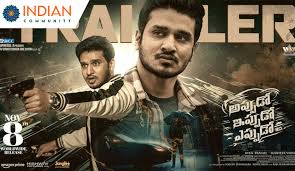South Indian thrillers have captivated audiences with their intense storytelling, gripping narratives, and, most importantly, their masterful use of music and sound design. Whether it’s the eerie silence before a shocking revelation or the pulsating beats that heighten a chase sequence, sound plays an integral role in shaping suspense. But how exactly do music and sound design influence the suspense and emotional impact of these films? This article explores the crucial role of audio elements in South Indian thrillers and how they enhance the storytelling experience.
The Power of Music in Building Suspense
Music in thrillers serves multiple purposes: it builds tension, foreshadows events, and keeps the audience emotionally engaged. In South Indian thrillers, composers blend traditional and modern elements to craft unique soundscapes that intensify suspense.
1. Background Scores that Evoke Anxiety
A well-crafted background score can dictate the pace of a thriller. South Indian composers like Anirudh Ravichander, Devi Sri Prasad, and Santhosh Narayanan have mastered the art of using eerie synths, deep bass tones, and unsettling melodies to create an atmosphere of uncertainty and suspense.
2. The Role of Silence in Suspense
Sometimes, the absence of music can be just as powerful as a full orchestral score. Silence amplifies tension, making the audience hyper-aware of small sounds like footsteps, breaths, or rustling leaves. Directors like Lokesh Kanagaraj and Mysskin effectively use silence to heighten moments of unease in their films.
3. Sudden Crescendos and Stingers
Sharp increases in volume and sudden musical stingers are commonly used to create jump scares. These techniques are particularly effective in horror-thrillers like “Ratsasan” (2018) and “Game Over” (2019), where the unexpected nature of the sound catches audiences off guard.
Sound Design: Creating an Immersive Thriller Experience
While music sets the emotional tone, sound design creates realism and immerses viewers in the film’s world. Foley sounds, ambient noise, and spatial audio techniques are essential components in South Indian thrillers.
1. Diegetic Sounds and Realism
Diegetic sounds—those that exist within the story’s world, like doors creaking or rain pattering—help ground the suspense in reality. The precise use of these sounds can make scenes more gripping and believable.
2. Echo and Reverb Effects
Manipulating sound reflections can create a sense of space and depth. For instance, in films like “Vikram Vedha” (2017), echoes in abandoned buildings amplify the feeling of isolation and danger.
3. Asynchronous Sound for Psychological Impact
Sometimes, sound doesn’t match the visuals, creating an unsettling effect. A calm, slow melody playing over a violent scene can be more disturbing than intense music. Directors use this technique to subvert audience expectations and enhance suspense.
The Cultural Influence on Soundscapes in South Indian Cinema
South Indian filmmakers integrate regional musical elements into their scores to add a unique cultural depth to their thrillers.
1. Carnatic and Folk Influences
Traditional Carnatic instruments like the mridangam and veena are sometimes blended with electronic sounds to create distinctive tension-building scores.
2. Use of Lyrical Elements to Hint at Themes
In some films, song lyrics subtly hint at upcoming plot twists. For example, a melancholic song at the start may foreshadow a tragic ending.
3. Experimentation with Fusion Sounds
Many contemporary thrillers experiment with fusion genres, combining classical music with techno beats or rock elements to create dynamic suspenseful themes.
How Sound Enhances Key Thriller Elements
1. Chase Sequences and Action Scenes
Fast-paced percussions and rhythmic sound cues increase adrenaline levels during high-stakes chases, making them more thrilling.
2. Emotional Payoffs and Climaxes
The right music at a climax scene can intensify emotional weight, making revelations and plot twists more impactful.
3. Psychological Manipulation of the Audience
Sound design can mislead audiences, making them expect one thing while delivering another, heightening the sense of unpredictability.
Music and sound design are not just supplementary elements in South Indian thrillers; they are core components that shape the audience’s experience. From eerie silence to powerful crescendos, every sound choice influences suspense, making thrillers more gripping and immersive. As technology advances, filmmakers continue to experiment with new techniques, ensuring that sound remains a critical tool in crafting unforgettable cinematic experiences.
FAQ
1. Why is music important in thrillers?
Music sets the emotional tone, builds suspense, and enhances dramatic moments, making scenes more impactful.
2. How do South Indian thrillers differ in sound design from Bollywood or Hollywood?
South Indian thrillers often incorporate regional music elements, experimental sound techniques, and culturally specific instruments, giving them a unique audio identity.
3. Can silence be more effective than music in suspenseful scenes?
Yes. Strategic use of silence heightens tension, making audiences more aware of minor sounds and creating a more immersive experience.
4. Which South Indian thriller movies have outstanding sound design?
Films like “Ratsasan,” “Vikram Vedha,” “Game Over,” and “Super Deluxe” are known for their exceptional use of music and sound to enhance suspense.
5. How does sound design contribute to audience emotions in thrillers?
Sound design manipulates perception, guiding emotions through tension, fear, or anticipation, making the storytelling more effective.
Meta Description: Discover how music and sound design shape suspense in South Indian thrillers. Explore the techniques filmmakers use to enhance tension and engage audiences.
